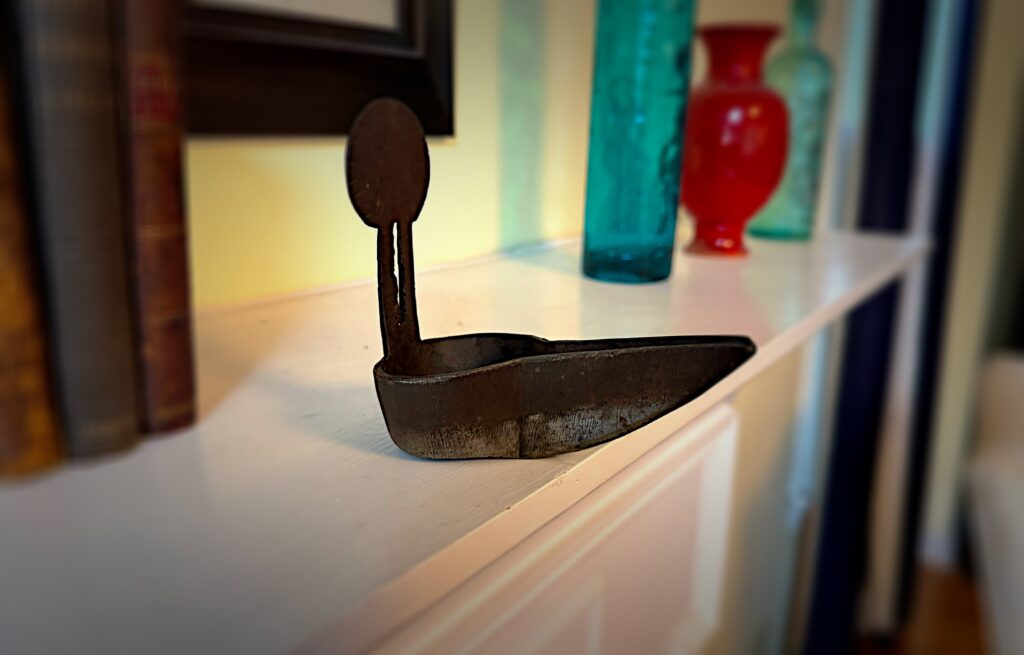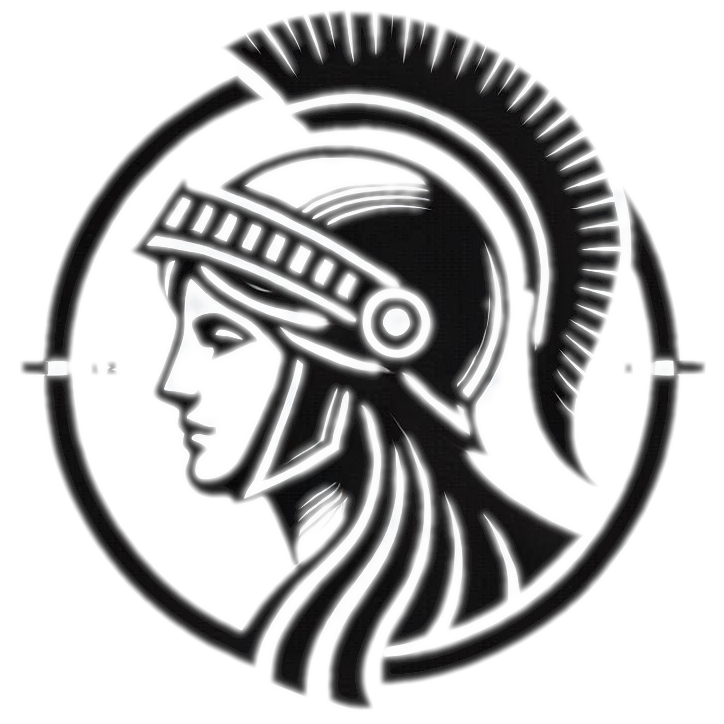
Notes:
Part of the appeal of antique books to me is that they are artifacts of history, with a connection to people and events of past centuries. So, I also occasionally collect artifacts that help provide more context around books. For example — electric lighting wasn’t invented until the late 1800s and wasn’t pervasive until the early 1900s, so what would someone in colonial America use for lighting when reading a book in the 1700s?
Candles at the time were expensive, so would only have been used by wealthy households. An average family would instead use an oil lamp, and this example is a specific type known as a Crusie lamp, which was popular in the 1600s through 1700s. This specific example is most likely from the mid-1700s.
Crusie lamps were very primitive lighting devices. This example is made of hand-wrought iron, with a bowl and spout. Oil would go into the bowl, which might be fish or whale oil. A wick would be laid in the spout, and lit to provide light at the end. The lamp would most commonly be hung from a mantle or wall. Crusie lamps were often used in pairs, with one suspended just below the other in order to catch oil drips.
By the late 1700s, Crusie lamps had been replaced with Betty lamps, which look very similar but added a cover and a wick holder, to prevent drips.
So when you hold a book from the 1700s, it’s quite likely that its original owner would have used a lamp such as this when reading.
Further reading:
